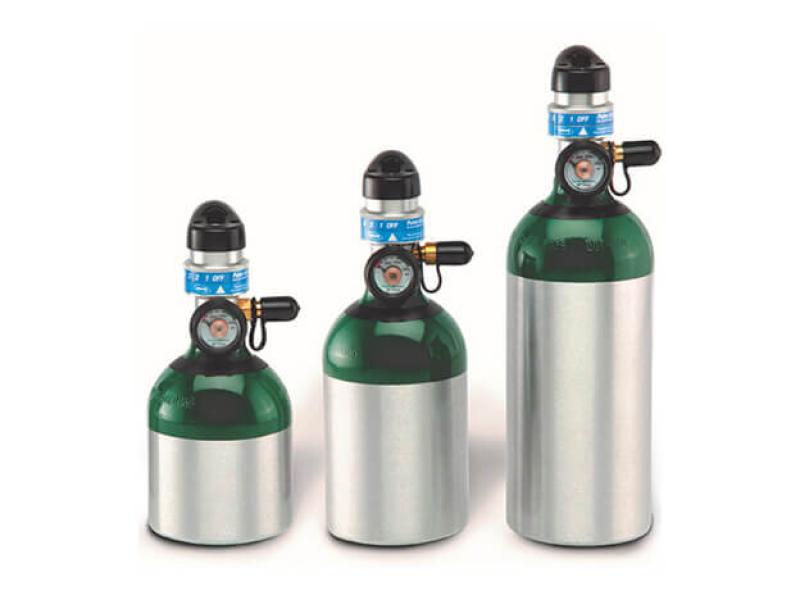With growing interest in outdoor activities like hiking, rock climbing, and scuba diving, the use of recreational oxygen equipment has also increased in recent years. Such equipment helps enhance safety and enjoyment when undertaking activities at high altitudes or underwater. This article provides an overview of the main types of recreational oxygen equipment available and how they can benefit enthusiasts of various outdoor sports and adventures.
Portable Oxygen Concentrators
Portable Oxygen Concentrators (POCs) are small, lightweight devices that concentrate oxygen from ambient air to provide a continuous flow of concentrated oxygen to the user. POCs have become popular recreational oxygen equipment due to their compact size and ease of use. They make oxygen support available for high altitude outdoor pursuits without the inconvenience of heavy oxygen tanks.
POCs work by filtering out nitrogen from the surrounding air to enrich the concentration of oxygen, which can then be delivered to the user through a nasal cannula. Advanced POC models are capable of producing over 85% concentrated oxygen suitable for recreational use. POCs range from 2-5 pounds in weight, making them a portable option for hiking, climbing, or camping at elevations above 8,000 feet.
Some key POC models used for recreation include the Inogen One G4, Inogen One G5, and SeQual Eclipse. These deliver pulse doses of oxygen throughout activity and can run for up to 8 hours on internal lithium-ion batteries. POCs eliminate the need to carry heavy compressed oxygen tanks and provide independence from a fixed oxygen source.
Oxygen Cylinders and Regulators
While POCs are lightweight and convenient, oxygen cylinders remain the mainstay for activities requiring higher oxygen flows over longer periods. Cylinders store compressed oxygen as a gas and will not run out of oxygen like battery-powered concentrators.
Cylinder sizes used for recreation vary from small E-size cylinders weighing around 2 pounds to larger D, C, and B cylinders for prolonged use. Common recreational cylinder pressures include 2,200 PSI (standard) and 3,000 PSI (ultra-light composite) designs.
Cylinders must be fitted with regulators to control the flow of oxygen and deliver it safely to the user. Dual-stage regulators are widely used as they reduce pressure in two stages for adjustable oxygen delivery. Regulators connect to various delivery devices like nasal cannulas, non-rebreather masks, and oxygen tents.
Proper cylinder sizing and regulator selection depends on the activity duration, level of exertion, and altitude. For example, scuba diving may require larger cylinder volumes to support lengthy bottom times. Mountaineering at extreme altitudes above 25,000 feet also necessitates reliable high-volume oxygen.
Subsections: Diving Equipment | Mountaineering Equipment
Diving Equipment
In recreational scuba diving, oxygen addition from a small cylinder carried on the diver's back can prevent decompression illness when surfacing from deeper depths. Two common recreational oxygen delivery setups are:
- Octopus Regulator: A second-stage regulator shares oxygen from the primary regulator's supply cylinder through a long hose for use as an emergency gas source. This setup allows divers to share breathing gas in an out-of-air emergency.
- Alternative Gas Source: A separate small oxygen cylinder, typically an E-size, is carried with its own first- and second-stage regulators to provide oxygen treatments during slow ascents and decompression stops. this independent system does not rely on gas shared from other divers.
Oxygen is an essential safety feature for scuba diving, especially when undertaking deep technical dives requiring lengthy decompression obligations. Recreational oxygen equipment allows divers to mitigate decompression sickness risks and heal more efficiently after long dives.
Mountaineering Equipment
For mountaineers pushing to extreme high altitudes, reliable oxygen equipment is vital for safety and performance. Setups for mountaineering commonly include:
- Pulse Flow Oxygen Regulator: Regulators designed to deliver intermittent oxygen pulsations that are more effective than continuous flows above 25,000 feet. They connect to larger D or C size cylinders.
- Face Masks: Full-face masks designed for comfortable, hands-free oxygen delivery during exertion at very high altitudes. Models have adjustable straps and shaped to fit securely even with heavy winter gear.
- Liquid Oxygen Systems: Complex setups that convert heavier liquid oxygen containers into high-volume gas oxygen through vaporizers. These support prolonged high-altitude expeditions above 26,000 feet where gas alone would not be practical.
Proper acclimatization is equally important as oxygen equipment for climbing high peaks. But supplemental oxygen expands the therapeutic window and safety margins for dealing with altitude sickness or emergencies. Today's rugged recreational oxygen gear enables more mountaineers to safely tackle previously prohibitive altitudes.
Other Recreational Applications
While diving and climbing are major uses, recreational oxygen equipment also benefits a variety of other outdoor activities:
- Wilderness Medicine: lightweight POCs aid remote emergency responders treating altitude illnesses like HAPE or HACE.
- Hunting/Shooting: Smaller kits deliver short oxygen bursts to help reload and steady rifles at high elevations where even mild exertion causes dyspnea.
- Search and Rescue: First responders managing complex evacuation lifts utilize oxygen to enhance performance and care for distressed victims.
- Sports: Some endurance athletes and equestrians use limited oxygen supplementation to boost performance at moderate high-altitude competitions.
- Guiding/Instructing: Outfitters leading groups in mountain environments or dive charters will carry oxygen to treat clients promptly if weather or conditions turn problematic.
From emergency preparations to enhanced recreational experiences, oxygen equipment opens new opportunities for enjoying challenging outdoor activities safely. Continued innovation is making lightweight, portable oxygen support more reliable and affordable. With proper training, supplemental oxygen vastly widens the safety margins for high-altitude and technical diving enthusiasts pursuing their passions.
Get more insights on Recreational Oxygen Equipment
